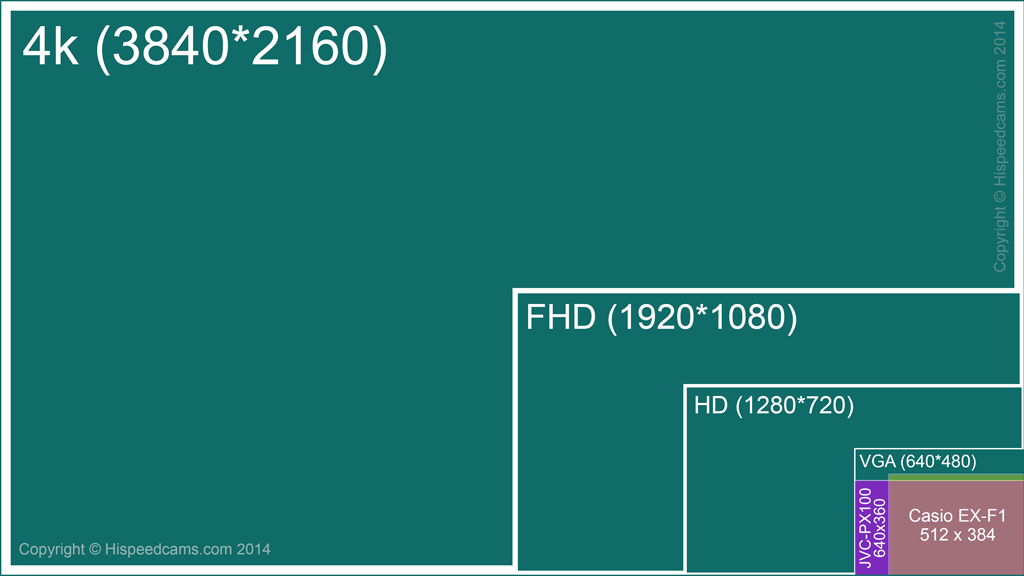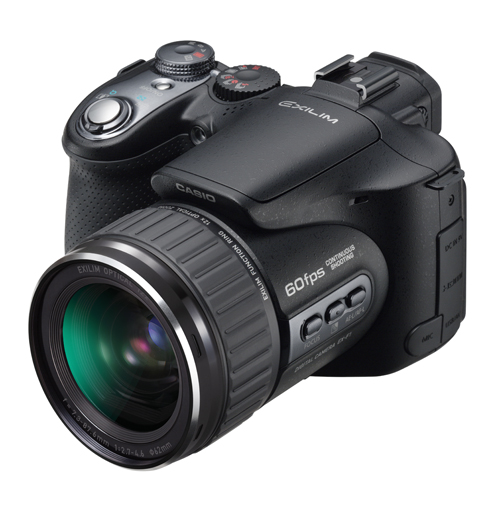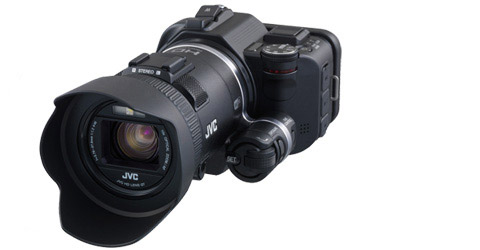Back in March 2008 a big splash in affordable Hi Speed arrived with the Casio EX-F1 Semi Pro camera. It promised to finally deliver the frame rates that were the realm of cameras in the tens of thousands of dollars but for the not to shabby price of $999 US.
It was hyped like the most advanced camera ever available for the prosumer space regarding hi speed and it was, but as with all things to good to be true. It failed to capture the adoption of videographers looking for quality.
The EX-F1 offered:
HD Recording
- 1920 x 1080 (FHD, 60 fields per second)
- 1280 x 720 (HD, 30 fps)
Hi-Speed Movies (HS)
- 512 x 384 (300 fps, 30-300 fps)
- 432 x 192 (600 fps)
- 336 x 96 (1200 fps)
Pretty impressive… however, the hi speed resolutions were not even NTSC SD resolution. It looked like you scaled up old VHS video to regular DV or D1 material and passed a lawnmower on top in the process. Lines were skipped and compression was ruthless. In the end what could have been an impressive tool for video enthusiasts was relegated to YouTube fun video status and for scientific aficionados to quench their thirst for looking at hi speed experiments.
The postage stamp resolutions never really delivered to the hype and expectations. Nothing really compelling besides a few people having fun experiment ever materialized by the footage obtained. Science teachers had a ball showing students phenomena that could only be observed in hi-speed for the first time in the average classroom.
So what happened? What could have been the reason the camera was hyped to the extreme but delivered a useless for production set of resolutions?
It seems according to some rumors that the camera was capable of at least 640*480 resolution at 240fps but it was left out as to not upset hi speed vendors with competing products in the higher price echelon. We will probably never know but to this day it still remains as the best hi speed Casio consumer camera ever produced. So Much so that even in used form it covets over $2400 US in the market if you can find one!
Sample video from Casio EX-F1
……..
Enter NAB 2013 and JVC with the Procision GC-PX100
January 2013 at NAB was the date of the JVC GC-PX100 announcement. The Specs were kept mostly secret until it was actually close to ship date. It touted specs of 600fps to capture sports and other speed related actions for review. Golfers, soccer, platform divers and runners could see their actions back in slow motion and analyze their performance on a budget. MSRP $999 Same as the Casio EX-F1.
When the specs finally landed we were left with these:
HD Recording
- MOV: 1920×1080/60p, 40Mbps (Video: 36Mbps, Audio: 4Mbps)
- MP4: 1920×1080/60p, 36Mbps / 1280×720/60p, 16Mbps
- iFrame: 1280×720/30p, 36Mbps
High Speed Video Recording with Super Slow Motion Playback:
- 120fps, 240fps and 300fps at 640 x 360 resolution
- 420fps and 600fps at 320 x 176 resolution
The HD video is not bad, it was actually some of the highest bit-rate video available at the time. However when it came to hi speed the resolution was still shy of plain old VGA 640*480 pixels. It skipped lines and the quality while not a total loss it was mushy and clearly unusable for any type of broadcast. Once more there are high frame rate cameras that over hype their features but at the time of delivering fail miserably on the resolution front.
Sample Video From the JVC PX100
……..
The following image shows the resolution disadvantages of these cameras compared to broadcast needs from 4k to VGA.

One year later at NAB we have no contender in this arena. No big low cost hi-speed announcements. We have however the Nikon 1 v3, Panasonic GH4 and Edgertronic cameras making ripples on the hi-speed world. Search our archive for more info on these cameras
Camera Processing and Memory have grown to leaps and bounds over the last five years and consumer cameras like the Go Pro Hero 3+ already offer up to 240p in VGA modes and 120p 720 in HD.
The technology is here today to offer cameras that deliver 120p 1080 to the consumer like the Panasonic HC-W850 and HC-V750. Even when those resolutions are still more like slightly low quality 720p, so in a few years we should be able to have real broadcast resolutions in frame rates above 240p without much fuzz.
Camera manufacturers build gear for a mass market and not a specialist subset that wants a specific feature like hi-speed. Cameras have been marketed as such with the hype behind them but are not really serious tools for hi-speed. The processing and components are available to create a camera that is of quality in this area and a company could create a dent in the market with a feature that would surpass all of the cameras before.
In our view the trend to hi-speed frame rates will be inevitable as slow motion has become a must have feature for many consumers. The power of the YouTube and Facebook video cannot be understated. The iPhone, GoPros, point and shoot cameras all have the feature and it is being used. Lets see where the technology takes us by next year, we hope HD 720 240p will be adopted.
We however commend Casio and JVC for offering a glimpse to the consumer of a technology that is truly magical, we do hope they continue further in a more serious fashion with these endeavors.
Let us know in the comments section what you think the Hi Speed Consumer camera market will look like by 2015, we would like to know your views!


